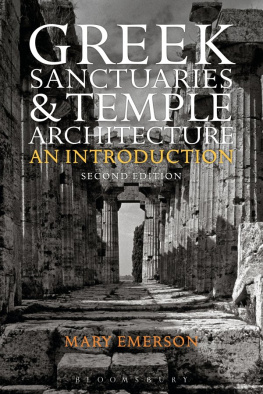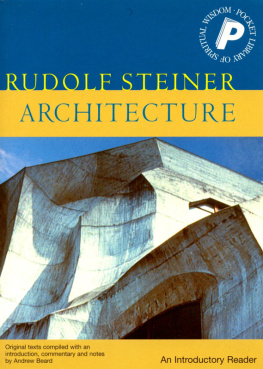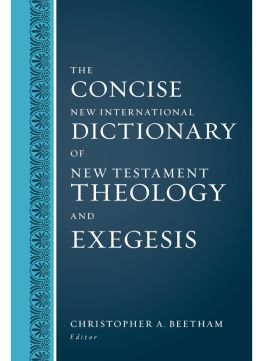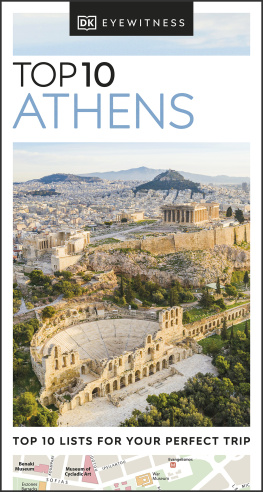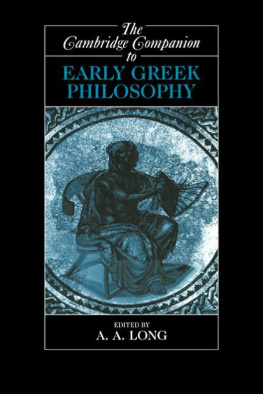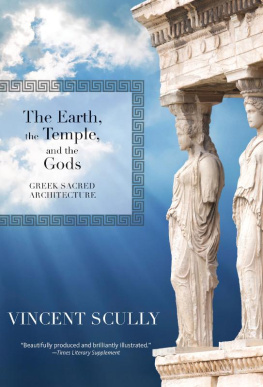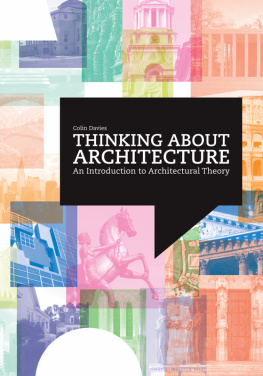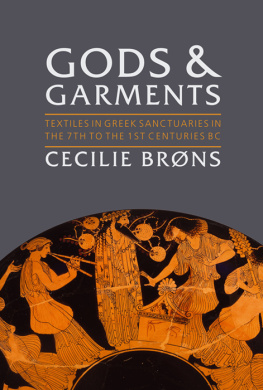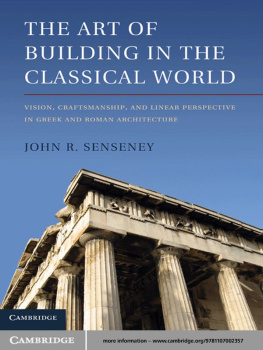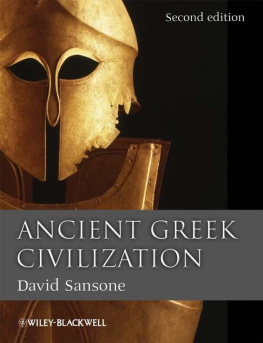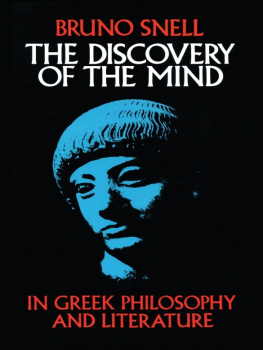GREEK SANCTUARIES AND TEMPLE ARCHITECTURE
Also available from Bloomsbury
AN INTRODUCTION TO GREEK ART
Second Edition, by Susan Woodford
GREEK ARCHITECTURE
by R. A. Tomlinson
Supplementary resources for Greek Sanctuaries and Temple Architecture can be found at www.bloomsbury.com/Emerson-Greek-Sanctuaries-2E
Please type the URL into your web browser and follow the instructions to access the Companion Website.
If you experience any problems, please contact Bloomsbury at contact@bloomsbury.com
GREEK SANCTUARIES AND TEMPLE ARCHITECTURE
AN INTRODUCTION
Second Edition
Mary Emerson
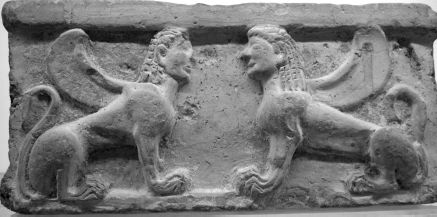
Bloomsbury Academic
An imprint of Bloomsbury Publishing Plc


The Panathenaic Way crossing the Agora, Athens. The north face of the Acropolis is in the background.

Erechtheion Caryatids seen from behind, looking towards Parthenon.
Contents
This book is primarily about buildings the temple buildings, treasuries and other structures to be found in ancient Greek sanctuaries. It aims to describe those buildings in a clear and detailed way, and to enable the reader to gain a good general understanding of their design and construction. It also aims to put the buildings into context, in several ways. First is the landscape context and then the surrounding built environment (usually but not always an elaborate sanctuary). Second, the social, historical and political context is touched upon. Third, the religious purpose and uses of sanctuaries are discussed. Finally, the meaning of the buildings for the original viewers is explored, in terms of the aesthetic appearance of both the overall architecture and the architectural sculpture. This last aspect is of great interest but of course is necessarily speculative.
It must be emphasised that this book is very much an Introduction. It is aimed at the reader who knows little or nothing about the topic, but who would like to gain reasonably in-depth knowledge quickly. For this purpose, there is a glossary of terms used. Technical terms have been used throughout so the reader can build up a useful working vocabulary as these terms will be found everywhere in the scholarly literature, often without explanation. No previous knowledge of the subject matter is assumed here, and hopefully the presentation of material will be clear and self-explanatory.
The book is arranged by topic. The opening sections give a brief account of the history and theory of Greek architecture. Then, each site or building is dealt with separately in a self-contained chapter. The treatments may be found to vary slightly, in accordance with the nature of the site and the evidence available. Although there is some cross-referencing, each case study should stand alone as a presentation of that topic. It is hoped that this method will be useful and practical. It certainly means that sections can be skipped or that the reader need not read the material in a linear fashion.
Two new sections have been added to this edition, covering the site of Poseidonia (Paestum) in Magna Graecia (Southern Italy) and the unusual temple of Zeus at Akragas (Agrigento) in Sicily.
Commentary on architectural sculpture has been added in this new edition. This has been done mainly to expand upon how the sculpture relates to its building, rather than as an autonomous artefact.
This new edition also has a greatly expanded bibliography. For the reader who wishes to go on to tackle the large body of scholarship, it should be easy to enter the field by making a start on the books and articles listed. Reference to particular discussions has been made in the text, but the reader will soon find their own way according to their particular interests.
I cannot overstate how heavily this book depends on the scholarship of others. As an introduction to the field, it is necessarily somewhat cursory in discussion, and many sacrifices had to be made about the selection of sites. In order to cover the most notable examples, only buildings from the sixth and fifth centuries BC are dealt with. The aim of the book is not to be exhaustive, but to equip readers new to the field with a working knowledge for further reading, or for site visits.
A few difficulties always occur with writing about the classical world. A big problem is the spelling of classical names, especially difficult when transliterating Greek. There is not much attempt here to follow a consistent method. Recognisable names are spelt in their most recognisable form: e.g. Athens, Bassae, Heracles. Other spellings attempt to be more accurate transliterations: for example, Akragas, Iktinos, Kallikrates.
All dates are BC unless marked AD. Mostly BC has been inserted, but not every single time.
All translations from Greek tragedies are by the author. Line references are to the original Greek texts. The passages will be found in published translations close to the original line numbers.
Finally, I owe hearty thanks to my dear friend Frances Van Keuren who, as well as being a constant source of encouragement, has offered very valuable criticism of the new chapters in this edition. I would like to thank Bloomsbury academic department who thought an enlarged edition was worthwhile, and thanks to the two anonymous readers who made many helpful suggestions. I am very grateful to the director and staff at the Parco Archeologico at Paestum for their kindness and help, both at the site and afterwards. Looking back into the distant past, I would like to thank Joyce Reynolds and Professor Pat Easterling for setting my feet on the path of Classical study at Newnham College, and for remaining interested, kindly, scholarly inspirations through all the years since. I would like to thank Dr Richard Cocke and the late Professor Andrew Martindale of the University of East Anglia for an eye-opening education in looking at art and architecture. I thank my family for their interest in the project, and especially Zak Emerson for his great help with pictures, and my husband Peter Emerson for his constant encouragement and support and particularly for his enthusiastic company on our western trips to Paestum and Sicily. Thanks also to Natalia Vogeikoff of the American School at Athens, Katharina Brandt at the Deutsches Archologisches Institut, Athens, and to Calliopi Christophi at the Ecole Franaise Athnes, who all generously provided pictures.
I would like to offer my grateful thanks to the many people who have helped me along the way towards producing this book, but especially to Frances Van Keuren of the University of Georgia, for her encouragement, criticism and inspiration at an early stage of writing, to Jennifer OHagan and Charles Relle, fellow Classicists, for their meticulous and critical reading of the text, to Jan Jordan and Natalia Vogeikoff-Brogan at the American School of Classical Studies in Athens, and to Oliver Pilz of the Deutsches Archologisches Institut and to Kalliopi Christophi of the Ecole Franaise Athnes for their kind and cheerful help with locating pictures, to Zak Emerson for much artistic and technical help with the figures, to Deborah Blake of Duckworth for her support and enthusiasm as well as ironing out of errors, and to Peter Emerson for generous and time-consuming help of all sorts.
Next page
